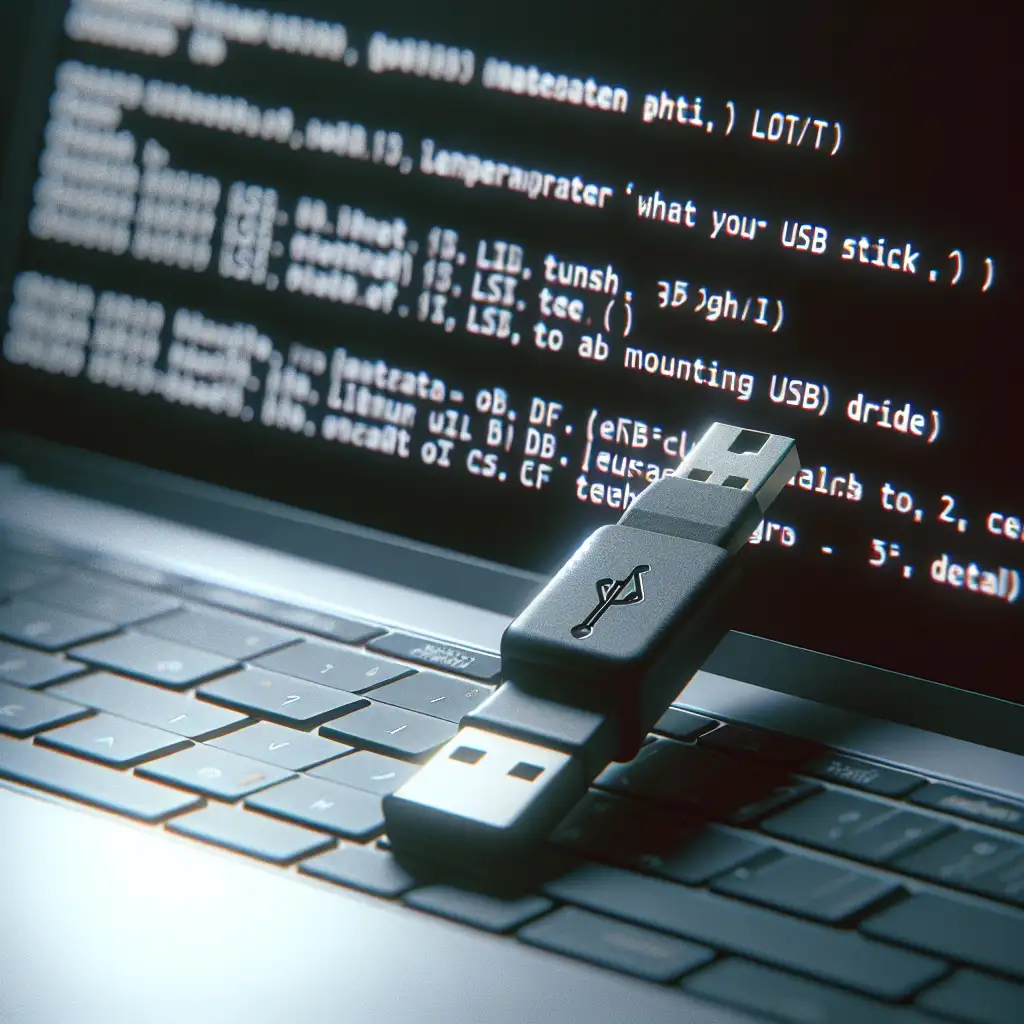Mastering USB Mounting in Linux: From Auto-Mounting to Manual Control
Modern Linux distributions handle USB storage mounting behind a web of services—udev, udisks2, graphical automounters. Yet, as soon as you leave a desktop environment, automount convenience vanishes. Operations teams working with headless servers, embedded systems, or constrained security profiles see this firsthand.
Case: USB Not Mounting? Start Here
A client arrives with a FAT32-formatted drive. You insert it into a bare-metal Ubuntu 22.04 server (no GUI). Nothing surfaces in /media. No surprise there—mounting isn’t “set and forget” on CLI-driven systems.
First priority: determine if the kernel detects the device at all.
dmesg | tail -n 20
Sample output after insertion:
[ 2531.176599] usb 3-2: new high-speed USB device number 7 using xhci_hcd
[ 2531.326593] sd 7:0:0:0: [sdb] 15124992 512-byte logical blocks: (7.74 GB/7.21 GiB)
[ 2531.327116] sdb: sdb1
Always check for sd* assignments; if you only see usb 3-2: new high-speed USB device, the block driver may be missing.
Device Discovery, Precisely
Skip guessing. Use lsblk or blkid to locate the block device and its partitions.
lsblk -o NAME,MODEL,SIZE,FSTYPE,MOUNTPOINT,LABEL,UUID
Practical output:
NAME MODEL SIZE FSTYPE MOUNTPOINT LABEL UUID
sda Samsung_SSD 232G
└─sda1 232G ext4 /
sdb SanDisk_USB_Cri 14.9G
└─sdb1 14.9G vfat BACKUP 4FAE-38A6
If FSTYPE is blank, filesystem recognition tools may be missing. See below.
Manual Mounting Procedure
1. Create a Mount Point
Don’t mount drives directly to /media—reserve that for automounters. Use /mnt or a custom path.
sudo mkdir -p /mnt/usb-backup
2. Mount the Device
Explicitly specify filesystem type to prevent silent errors, e.g., for FAT32:
sudo mount -t vfat /dev/sdb1 /mnt/usb-backup
For NTFS:
sudo mount -t ntfs /dev/sdb1 /mnt/usb-backup
You’ll get mount: unknown filesystem type 'ntfs' if ntfs-3g isn’t installed.
Gotcha: If you see mount: /mnt/usb-backup: wrong fs type, bad option, bad superblock...—run dmesg | tail for actual kernel error. Filesystem corruption is common after Windows 10 “fast startup”.
3. Adjust Mount Options
Common arguments:
-o ro: mount read-only (never trust an unscanned USB writeable).-o uid=1000,gid=1000: ensure the target user has file access on FAT/NTFS.
| Option | Use-Case |
|---|---|
| ro | Write protection |
| noexec | Mitigate accidental execution |
| sync | Safer unmounts (performance hit) |
| umask=007 | Restricts group/other permissions |
Example:
sudo mount -o ro,noexec,uid=1000,gid=1000 /dev/sdb1 /mnt/usb-backup
Safe Removal
If you unmount prematurely, cached writes can be lost. Always:
sudo umount /mnt/usb-backup
If the device is “busy”, use:
sudo lsof +D /mnt/usb-backup
Then close hanging processes.
Known issue: On GNOME/KDE with automounters, avoid command-line umount; desktop may remount instantly via udisks2.
Automounting with /etc/fstab: Reliable, but Rigid
For stateful hardware—NAS appliances, backup appliances—define static mount rules in /etc/fstab.
Example (read-only, FAT32):
UUID=4FAE-38A6 /mnt/usb-backup vfat ro,users,noauto,nofail 0 0
nofailprevents boot failure if drive is absent.noautodisables automatic mounting (manual only).usersallows non-root mounts.
Find UUID using:
blkid /dev/sdb1
Mount as user:
mount /mnt/usb-backup
Side note: Swap USBs with different UUIDs? The mount fails until you update /etc/fstab.
Installing Filesystem Drivers
VFAT usually “just works.” For exFAT or NTFS, not so.
On Ubuntu/Debian 22.04+:
sudo apt install exfat-fuse exfatprogs ntfs-3g
On RHEL/CentOS-based:
sudo dnf install exfat-utils fuse-exfat ntfs-3g
Trade-off: ntfs-3g incurs higher CPU usage during heavy I/O than kernel-native filesystems.
Troubleshooting: Fast Checks
- Device appears, but
lsblkshows no partitions? Suspect a partition table issue. Try:sudo fdisk -l /dev/sdb - Receiving
mount: unknown filesystem? Double-check installed utilities. - File permissions wrong after mounting FAT/NTFS? Use
uid=andgid=as above. - ExFAT sometimes fails with “failed to get vfs_fd” on older kernels—update to >=5.4, or install latest
exfat-fuse.
Recap: Minimal Commands
# Identify device and partition
lsblk
sudo fdisk -l
# Create mountpoint
sudo mkdir -p /mnt/usb-backup
# Mount, read-only as user ID 1000
sudo mount -t vfat -o ro,uid=1000 /dev/sdb1 /mnt/usb-backup
# Locate UUID for fstab
blkid /dev/sdb1
# Unmount
sudo umount /mnt/usb-backup
Tip: On production appliances, always mount USBs read-only by default and explicitly remount as writeable as needed. Automounter quirks (especially from GNOME-based udisks2) can interfere with manual processes—disable those services on servers.
This isn’t perfect—edge cases exist, e.g., hotplug on ZFS-backed systems behaves differently.
Debug with journalctl -xe for hardware-level issues.
